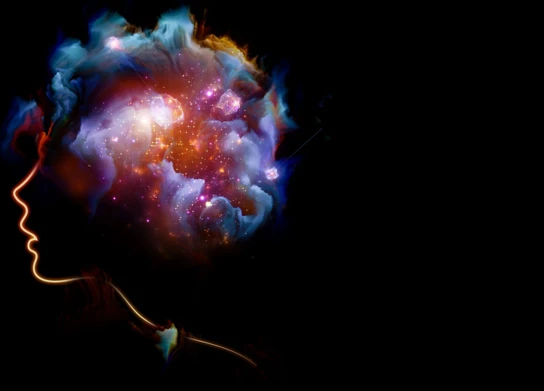Unveiling the Connection Between Death Dreams and Personal Transformation – explore the enigmatic realm of dreams where the boundaries of reality are blurred and the subconscious mind takes center stage. Death dreams, hauntingly vivid and often shrouded in mystery, have intrigued and perplexed humans for centuries. In this article, we will delve into the symbolic nature of death dreams, exploring how they represent change, signifying the end of a phase, and highlighting the fear of change. We will also examine the psychological interpretations of death dreams through the perspectives of renowned scholars Carl Jung and Sigmund Freud. Additionally, we will uncover the significance of death dreams in personal transformation, as they provoke self-reflection, encourage letting go of the past, and inspire growth and renewal. We will analyze common symbols in death dreams and discuss strategies for coping with disturbing dreams. Finally, we will delve into the fascinating realm of lucid dreaming and its connection to death dreams. Prepare to enter the realm of the subconscious and unravel the hidden messages within your dreams.
What are Death Dreams?
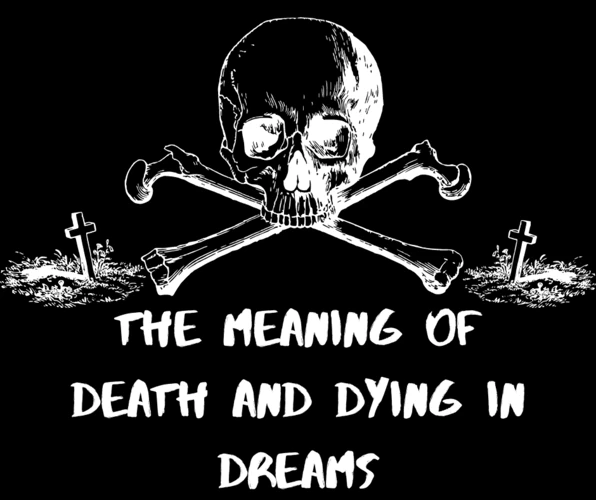
What are Death Dreams? Death dreams, as the name suggests, are dreams that involve death or dying. These dreams can be vivid and intense, leaving a lingering sense of unease upon waking. In death dreams, individuals often find themselves in various scenarios related to death, such as witnessing a loved one’s passing, experiencing their own death, or encountering symbols of death like graveyards or funerals. While death dreams may seem distressing, they hold significant meaning and can provide valuable insights into our subconscious minds and emotional well-being. These dreams often serve as a mirror to our inner selves, exploring our fears, anxieties, and desires surrounding mortality and the unknown. Death dreams can also act as a catalyst for personal transformation, prompting us to reflect on our lives, confront our fears, and make necessary changes to grow and evolve. In the next sections, we will explore the symbolic nature of death dreams, the psychological interpretations, and the significance of these dreams in personal transformation.
The Symbolic Nature of Death Dreams
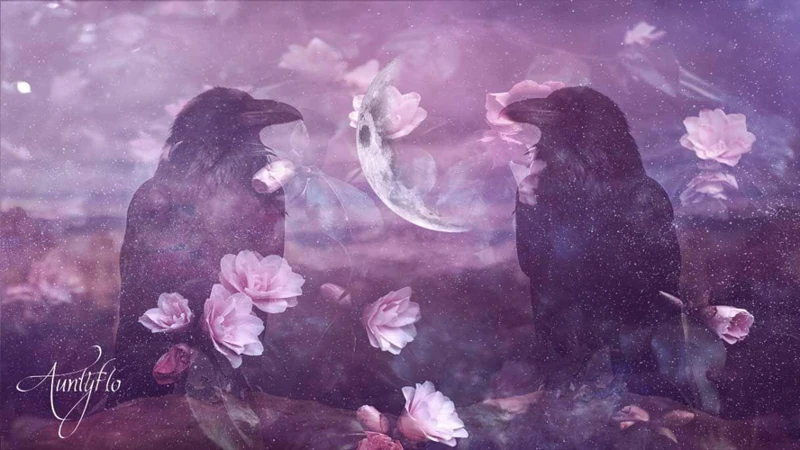
The Symbolic Nature of Death Dreams: Death dreams carry a profound symbolic nature, often serving as powerful metaphors for change and transformation. These dreams are not to be taken literally but rather deciphered through the lens of symbolism and metaphorical representation. One common interpretation is that death in dreams does not signify physical death itself, but rather symbolizes the end of a phase or the imminent need for personal growth and development. Death dreams can act as wake-up calls for self-reflection, urging individuals to reevaluate their lives, shed old layers, and embrace new beginnings. They can also highlight the fear of change and the uncertainty that accompanies transitions. By exploring the symbolism embedded within death dreams, we can gain a deeper understanding of our subconscious fears, desires, and aspirations, providing us with valuable insights into our own psyche. For further exploration of the fear of death in dreams, you can refer to our article on analyzing the fear of death dreams.
1. Representing Change and Transformation
Representing Change and Transformation: Death dreams have long been associated with profound change and personal transformation. When we dream of death, it often symbolizes the end of one phase of life and the beginning of another. Just as death is a natural part of the cycle of life, these dreams signify the need for transition and growth in our waking lives. The symbolism in death dreams can be interpreted as an invitation to embrace change and let go of old patterns or behaviors that no longer serve us. It prompts us to reflect on our current circumstances and consider what aspects of ourselves or our lives need to “die” in order to make way for something new and transformative. Death dreams can serve as a wake-up call, urging us to reassess our priorities, make courageous decisions, and take bold steps towards personal evolution. By exploring the themes and emotions present in these dreams, we can gain valuable insights into the changes we need to make and embark on a journey of self-discovery and growth. To further understand the connection between death dreams and personal transformation, let’s examine the psychological interpretations and the significance of these dreams in more detail.
2. Signifying the End of a Phase
2. Signifying the End of a Phase
Death dreams often carry the symbolism of an ending or a closure to a particular phase or aspect of our lives. These dreams can serve as a powerful metaphor for the completion of a chapter, whether it be in relationships, careers, or personal growth. Just as in life, where one phase ends and another begins, death dreams mirror this transition. They can indicate the need to let go of old patterns, habits, or beliefs that no longer serve us. This symbolism of death represents a symbolic death of the old self, making way for new beginnings and growth. It is not a literal indication of physical death but rather a profound transformation that is taking place within us. Similar to the life cycle of the Phoenix rising from the ashes, death dreams show us that through the end of one phase, we have the opportunity for rebirth and renewal. These dreams can be a gentle reminder to embrace change and have the courage to move forward into the unknown. If you’re interested in exploring more about grief and death dreams, you can read our related article here.
3. Highlighting Fear of Change
3. Highlighting Fear of Change: Death dreams often serve as a reflection of our deepest fears, including the fear of change. These dreams can present scenarios where death represents the end of a familiar phase or the unknown territory of a new beginning. The symbolism of death in these dreams may evoke feelings of uncertainty, anxiety, or resistance to embracing the unknown. The fear of change is a common theme in personal growth and transformation, as change often requires stepping out of our comfort zones and embracing the unfamiliar. In death dreams, the fear of change can manifest as resistance or avoidance, symbolized by the presence of obstacles, dark or foreboding landscapes, or recurring themes of being trapped or unable to move forward. These dreams provide an opportunity to confront and explore our fears surrounding change, allowing us to gain insight and ultimately find the courage to embrace new possibilities. By facing our fear of change within the realm of dreams, we can begin to examine our attitudes towards change in our waking lives and work towards personal transformation. To further understand the cultural and belief aspects of death dream interpretation, refer to our article on “Analyzing Culture and Beliefs in Death Dream Interpretation“.
Psychological Interpretations of Death Dreams

Psychological Interpretations of Death Dreams delve into the fascinating field of dream analysis and explore the different perspectives of renowned scholars. Carl Jung, a prominent figure in psychology, believed that death dreams symbolize our innate desire for personal growth and transformation. According to Jung, death in dreams represents the end of one phase and the beginning of another, highlighting the importance of embracing change and letting go of the past. On the other hand, Sigmund Freud interpreted death dreams as a reflection of our unconscious fears and anxieties surrounding our own mortality. Freud suggested that death dreams could be a manifestation of repressed emotions or unresolved conflicts. These psychological interpretations provide valuable insights into the meaning and significance of death dreams, shedding light on the complex workings of the human mind and the depths of our subconscious thoughts and emotions.
1. Carl Jung’s Perspective
Carl Jung’s Perspective on death dreams provides valuable insights into the symbolic and transformative nature of these dreams. According to Jung, dreams, including death dreams, reflect the collective unconscious and contain archetypal symbols that tap into universal human experiences. Jung believed that death in dreams represents psychological transformation and the process of individuation, where individuals strive to become their true and authentic selves.
Jung emphasized the importance of looking beyond the literal interpretation of death dreams and exploring the underlying symbolism. For example, death may symbolize the end of an old self or the shedding of outdated beliefs and behaviors. It can signify a profound shift in one’s life, such as ending a toxic relationship, leaving a job, or embarking on a new spiritual journey. These transformative moments are often accompanied by a sense of liberation and rebirth.
Jung highlighted that death dreams can serve as messages from the unconscious, urging individuals to confront their fears and embrace personal growth. By facing the fear of death symbolically in dreams, individuals can gain insight into their own mortality, leading to a deeper appreciation for life and a greater sense of purpose.
Jung’s perspective on death dreams reminds us that the symbolism within these dreams holds immense psychological significance. By exploring and interpreting these symbols, we can unlock hidden aspects of ourselves and embark on a transformative journey of self-discovery and personal growth.
2. Sigmund Freud’s Viewpoint
Sigmund Freud, the influential psychoanalyst, had a unique viewpoint on death dreams. According to Freud, dreams, including death dreams, are windows into the unconscious mind and are rich in symbolic meaning. He believed that death dreams were not always literal representations of death but were instead symbolic expressions of hidden desires and repressed thoughts. Freud theorized that death in dreams often represented a metaphorical death or the death of something else, rather than actual physical death. For example, death dreams could symbolize the end of a relationship, the death of a part of oneself, or the resolution of a conflict. Freud also suggested that death dreams could serve as a form of wish fulfillment, allowing individuals to explore their forbidden or unconscious desires in a safe and disguised way. In Freud’s view, death dreams served as a cathartic release, providing individuals with an outlet for expressing their suppressed emotions and secret wishes. While Freud’s interpretation of death dreams may not resonate with everyone, his perspective offers a thought-provoking lens through which we can explore the hidden meanings and psychological significance of these enigmatic dreams.
Significance of Death Dreams in Personal Transformation
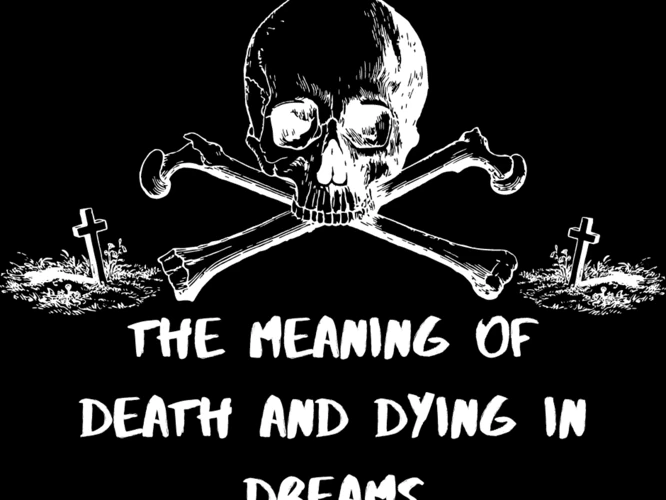
Death dreams hold significant significance in personal transformation. They have the power to provoke deep self-reflection within individuals, leading to profound insights and growth. Through the unsettling imagery and emotions presented in death dreams, individuals are prompted to question their beliefs, values, and choices, ultimately gaining a better understanding of themselves. These dreams often act as a catalyst for change by urging individuals to let go of the past. By confronting their fears and anxieties surrounding mortality and the unknown, individuals are encouraged to embrace new experiences and opportunities for personal growth. Death dreams inspire renewal, pushing individuals to break free from stagnant patterns and embrace transformation. In this process, individuals shed old beliefs and behaviors that no longer serve them, paving the way for personal evolution. Ultimately, death dreams serve as powerful tools for self-discovery and personal transformation, guiding individuals towards living a more authentic and fulfilled life.
1. Provoking Self-Reflection
Provoking Self-Reflection: Death dreams have a profound impact on our psyche, provoking self-reflection and introspection. When we experience a dream involving death, it stirs up emotions and forces us to confront our own mortality. These dreams act as a catalyst for deep self-reflection, prompting us to question the nature of life, our purpose, and the choices we make. The symbolism and imagery in death dreams often reveal aspects of ourselves that we may have been ignoring or suppressing. It is a time of reckoning, where we are encouraged to examine our values, beliefs, and priorities. Through self-reflection, we gain a deeper understanding of ourselves and our path in life. We may uncover hidden desires, unresolved conflicts, or fears that need to be addressed. This process of self-reflection can be both revealing and transformative, leading to personal growth and the opportunity to make positive changes in our lives. By embracing the messages and symbolism of death dreams, we open ourselves to a deeper level of self-awareness and self-discovery. Through self-reflection, we can gain valuable insights that guide us towards living a more meaningful and authentic existence. So, the next time you have a death dream, take a moment to reflect on the emotions and lessons it evokes, and embrace the opportunity for self-transformation that these dreams present.
2. Encouraging Letting Go of the Past
Encouraging Letting Go of the Past – Death dreams often serve as a powerful reminder to let go of the past and embrace the present moment. These dreams may feature deceased loved ones, symbolizing unresolved emotions or unfinished business that need to be addressed. In such dreams, we may find ourselves engaging in conversations or activities with the departed, providing an opportunity to gain closure or make peace with past experiences. By encountering these figures in our dreams, we are prompted to confront any lingering attachments, regrets, or grievances that may be holding us back. Death dreams encourage us to release the emotional baggage we carry from the past, allowing us to move forward with greater clarity and freedom. They urge us to let go of negative patterns, harmful relationships, and self-limiting beliefs that hinder our personal growth. By embracing the message of these dreams and actively working towards letting go, we can create space for new experiences, relationships, and opportunities in our lives. Letting go of the past can be a transformative process, enabling us to reclaim our personal power and shape our own destiny. It frees us from the chains of the past, allowing us to fully engage in the present moment and forge a brighter future. (source)
3. Inspiring Growth and Renewal
3. Inspiring Growth and Renewal: Death dreams have the potential to inspire growth and renewal within individuals. When we encounter death in our dreams, it serves as a powerful symbol of transformation and rebirth. These dreams may indicate that a certain aspect of our lives or identity is coming to an end, making way for new beginnings and personal growth. The imagery of death and subsequent renewal can prompt us to reflect on our current circumstances, reevaluate our goals and priorities, and make positive changes in our lives. It can be a wake-up call, urging us to let go of stagnant patterns or relationships that no longer serve us. By embracing the symbolic death in our dreams, we open ourselves up to the possibilities of transformation and renewal. It is through the process of letting go of old beliefs, behaviors, and attachments that we can experience personal growth and embark on a journey of self-discovery. Death dreams, in this context, serve as catalysts for metamorphosis and the opportunity to embrace a new chapter in our lives. So instead of fearing death dreams, we can view them as invitations to embrace change, seek personal growth, and renew ourselves from within.
Common Symbols in Death Dreams
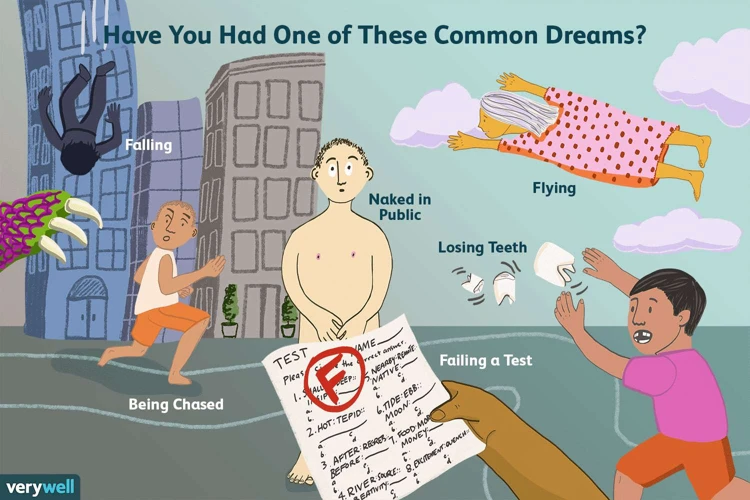
Common Symbols in Death Dreams:
1. Coffin: A coffin is a prevalent symbol in death dreams, representing the finality and end of a situation or phase in life. It signifies letting go of the past and embracing new beginnings.
2. Graveyard: A graveyard represents the resting place for the deceased and can symbolize the need to confront and address buried emotions or unresolved issues. It may also indicate a desire for closure or the need to let go of the past.
3. Funerals: Dreaming of attending a funeral may symbolize the need to mourn a loss or say goodbye to an aspect of oneself or a relationship. It can also signify a transition or a significant change occurring in one’s life.
4. Ghosts: Ghosts in death dreams can represent unresolved emotional baggage or unfinished business from the past. They may indicate feelings of guilt, regret, or the presence of a lingering memory that needs to be acknowledged and resolved.
5. Rebirth: While death is often associated with finality, dreaming of rebirth or being reborn can symbolize personal growth, transformation, and the opportunity for a fresh start. It suggests embracing change and embarking on a new phase in life.
6. Angelic figures: Seeing angelic figures in death dreams can symbolize spiritual guidance and support during times of transition or difficulty. They represent protection, hope, and the presence of higher wisdom.
7. Darkness and Light: The juxtaposition of darkness and light in death dreams can symbolize the contrast between the unknown and the conscious mind. It signifies the need to explore hidden aspects of oneself and seek illumination on a deeper level.
8. Crossroads: Dreaming of being at a crossroads can indicate a decision-making process or a pivotal moment in life where one must choose a new path. It denotes the need to weigh options, make choices, and navigate through life transitions.
9. Resurrection: Resurrection in death dreams can symbolize inner strength, resilience, and the ability to overcome challenges. It represents the capacity for personal transformation and the ability to rise above adversity.
10. Inheritance: Dreaming of receiving an inheritance or inheriting something in a death dream can symbolize the acquisition of wisdom, knowledge, or valuable lessons from past experiences or relationships.
These are just a few of the many symbols that can appear in death dreams. It’s important to remember that the meaning of these symbols can vary for each individual, as their personal experiences and beliefs shape the interpretation of their dreams.
Interpreting Personal Experiences in Death Dreams
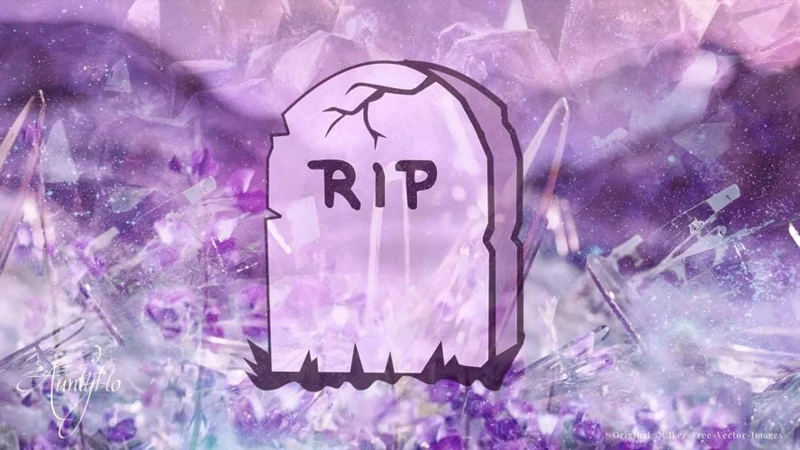
Interpreting Personal Experiences in Death Dreams: When it comes to interpreting personal experiences in death dreams, it is essential to consider the unique symbols, emotions, and context of the dreamer. Death dreams are highly subjective, and individual experiences can vary greatly. One person may interpret a death dream as a symbol of impending doom, while another may view it as a representation of personal growth and transformation. To decipher the meaning of personal experiences in death dreams, it is crucial to reflect on the specific details of the dream. Looking at the people, places, and events that occur can provide valuable insights into the dreamer’s subconscious thoughts and emotions. Additionally, examining the feelings and emotions experienced during the dream can offer clues about underlying fears, desires, or unresolved issues. Keeping a dream journal can be immensely helpful in identifying patterns and recurring themes in death dreams. By recording and reflecting on these personal experiences, individuals can gain a deeper understanding of themselves and navigate the transformative journey that death dreams often symbolize. Remember, everyone’s interpretation of death dreams is unique, and it is vital to trust your intuition and personal associations when making sense of these profound experiences.
Coping with Disturbing Death Dreams

Coping with Disturbing Death Dreams can be challenging, as these dreams often evoke strong emotions and leave a lasting impact on our psyche. Here are some strategies to help navigate and cope with these unsettling dreams:
1. Reflect and journal: Take time to reflect on the content and emotions of your death dreams. Consider keeping a dream journal to record and analyze the details. Writing down your thoughts and feelings can provide clarity and help you process the dream’s symbolism.
2. Seek support: Discussing your death dreams with a trusted friend, family member, or therapist can provide a sense of relief and understanding. Sharing your experiences allows others to offer support, empathy, and different perspectives on the dream’s meaning.
3. Practice self-care: Engage in self-care activities that promote relaxation and peace of mind. This can include meditation, deep breathing exercises, engaging in hobbies you enjoy, or spending time in nature. Taking care of your overall well-being can help reduce anxiety and stress related to disturbing dreams.
4. Explore dream interpretation: Consider exploring the symbolism and meaning behind your death dreams. Research common dream symbols or consult resources that specialize in dream interpretation. Remember that the interpretation of dreams is subjective, and it’s essential to find interpretations that resonate with your personal experiences and feelings.
5. Create a peaceful sleep environment: Establish a calming bedtime routine and create a sleep environment that promotes restful sleep. This can include using calming scents, keeping a comfortable temperature, and eliminating distractions such as electronic devices before bed. Creating a peaceful sleep environment can help reduce the likelihood of having disturbing dreams.
6. Develop lucid dreaming techniques: Lucid dreaming is the practice of becoming aware that you are dreaming while you are still in the dream. Learning and practicing lucid dreaming techniques can provide a sense of control over your dreams. This awareness allows you to consciously change the course of the dream or wake yourself up if it becomes too distressing.
Remember that coping with disturbing death dreams is a personal journey, and finding what works best for you may take time. It’s essential to prioritize self-care and seek professional help if persistent or recurring disturbing dreams significantly impact your well-being.
Lucid Dreaming and Death Dreams
Lucid Dreaming and Death Dreams
Lucid dreaming is a unique phenomenon where individuals become aware that they are dreaming while still in the dream state. This state of awareness provides a remarkable opportunity to consciously engage and interact with the dream environment. When it comes to death dreams, lucid dreaming can offer a powerful tool for exploration and understanding.
1. Utilizing Lucid Dreaming Techniques: Lucid dreaming techniques such as reality checks and keeping a dream journal can aid in achieving lucidity during death dreams. By practicing these techniques regularly, individuals can increase their chances of becoming aware within the dream and gain control over the dream narrative.
2. Confronting Fear: Lucid dreaming allows individuals to confront their fears directly within the dream space. For those who have recurring death dreams or experience fear surrounding mortality, lucid dreaming provides a safe arena to face and process these emotions. It empowers individuals to explore death-related symbolism and themes, fostering a sense of empowerment and control over their inner fears.
3. Transformative Possibilities: Lucid dreaming combined with death dreams can create a powerful platform for personal transformation. By embracing lucidity within these dreams, individuals can actively engage with the symbolism and messages presented to them. They can use this opportunity to gain insights, confront underlying fears, and embark on a journey of self-discovery and growth.
4. Integration into Wakeful Life: Through lucid dreaming experiences with death dreams, individuals can bring the lessons and insights obtained in the dream state into their waking lives. The transformative potential lies in one’s ability to apply the self-reflection, courage, and acceptance experienced in lucid death dreams to their real-life relationships, personal goals, and overall well-being.
Lucid dreaming can be an invaluable tool for exploring and understanding death dreams. It provides a unique opportunity to engage with the dream state consciously, confront fears, and initiate personal transformation. By embracing lucidity within death dreams, individuals can unlock the hidden potential for growth and self-discovery, bridging the gap between the dream world and waking reality.
Conclusion
In conclusion, death dreams are enigmatic and captivating experiences that hold profound significance in our personal transformation. These dreams symbolize change, signal the end of a phase, and highlight our fear of it. Through the lens of psychological interpretations, we have explored the perspectives of Carl Jung and Sigmund Freud, shedding light on the deeper meanings behind these dreams. Death dreams provoke self-reflection by forcing us to confront our fears, encouraging us to let go of the past, and inspiring us to embrace growth and renewal. Common symbols in death dreams further enhance our understanding of their messages and provide a rich tapestry of imagery to interpret. Coping with disturbing death dreams requires strategies such as journaling, seeking therapy, or practicing relaxation techniques. Additionally, the connection between death dreams and lucid dreaming adds another layer of intrigue to the phenomenon. By unraveling the mysteries of our dreams, we gain insight into our innermost thoughts, fears, and desires, ultimately leading to personal transformation and self-discovery. So, embrace the realm of dreams and allow death dreams to guide you on a journey of profound change and awakening.
Frequently Asked Questions
1. Do death dreams predict actual death?
No, death dreams should not be taken as literal predictions of actual death. Rather, they symbolize various aspects of our lives and emotions.
2. Why do we have death dreams?
Death dreams serve as a way for our subconscious mind to process our fears, anxieties, and emotions related to mortality and change.
3. Are death dreams always negative and scary?
Not necessarily. While some death dreams may be unsettling, they can also represent transformation, growth, and renewal.
4. Can death dreams be interpreted differently for each individual?
Yes, the interpretation of death dreams can vary depending on an individual’s unique experiences, beliefs, and personal contexts.
5. Are there cultural differences in the interpretation of death dreams?
Yes, different cultures may have varying beliefs and interpretations when it comes to death dreams. Exploring these cultural variations can provide deeper insights.
6. Can death dreams provide closure after losing a loved one?
Yes, death dreams can provide a sense of closure or comfort, allowing individuals to process their grief and emotions surrounding the loss of a loved one.
7. Are there any common symbols in death dreams?
Yes, common symbols in death dreams can include graves, funerals, deceased loved ones, or even abstract concepts like darkness or transformation.
8. How can one cope with disturbing death dreams?
Coping with disturbing death dreams can involve practices such as keeping a dream journal, seeking therapy or counseling, and practicing relaxation techniques before bedtime.
9. What is lucid dreaming, and how does it relate to death dreams?
Lucid dreaming is the state of being aware that you are dreaming while still in the dream itself. It can offer opportunities to consciously explore and interact with death dreams, aiding in self-reflection and transformation.
10. Should death dreams be interpreted as literal messages or metaphors?
Death dreams are typically interpreted as metaphors and symbolic representations rather than literal messages. Analyzing them in this context can provide deeper meaning and insight.

